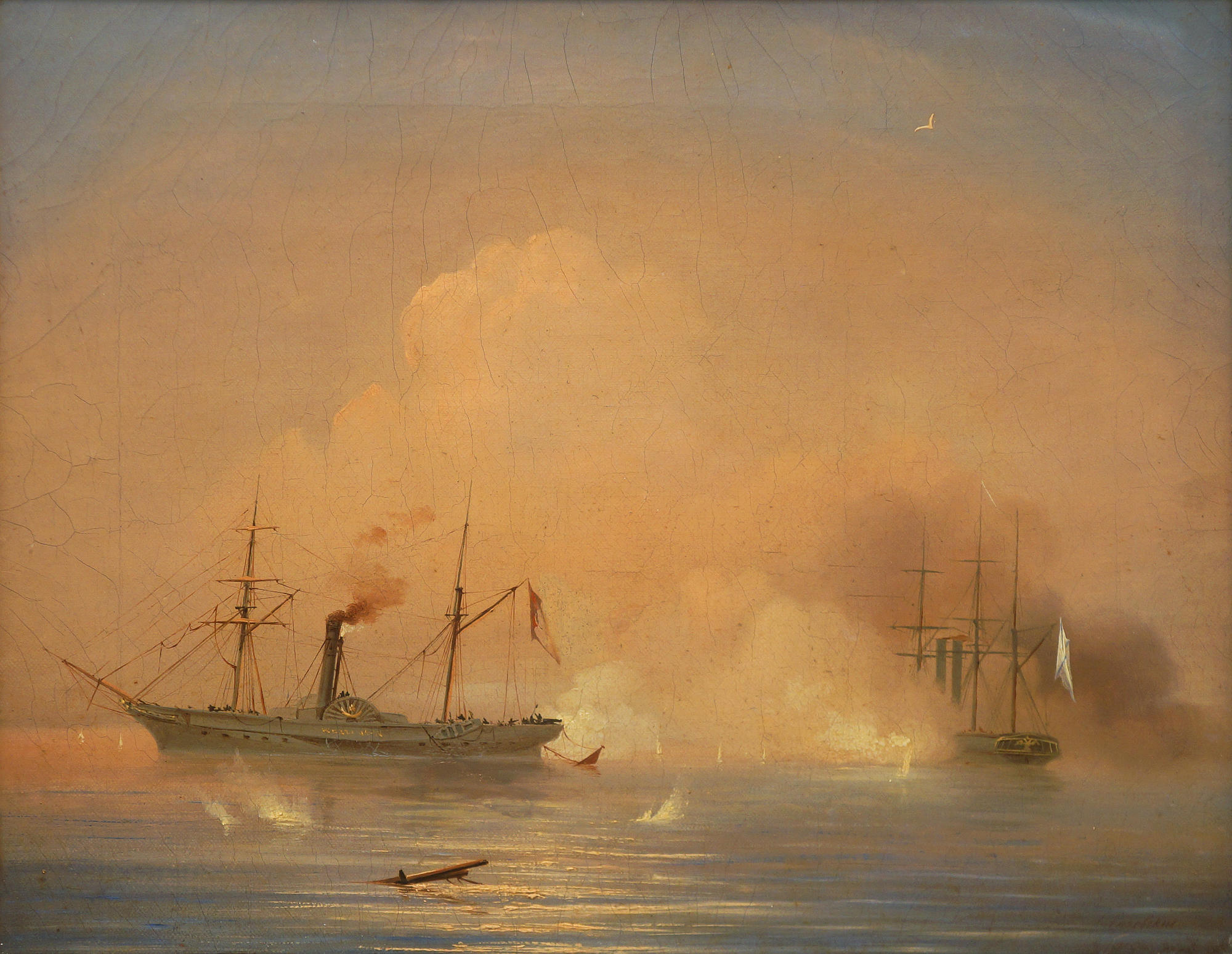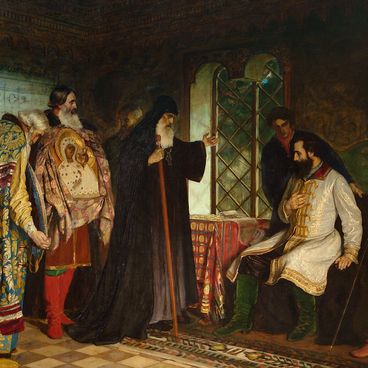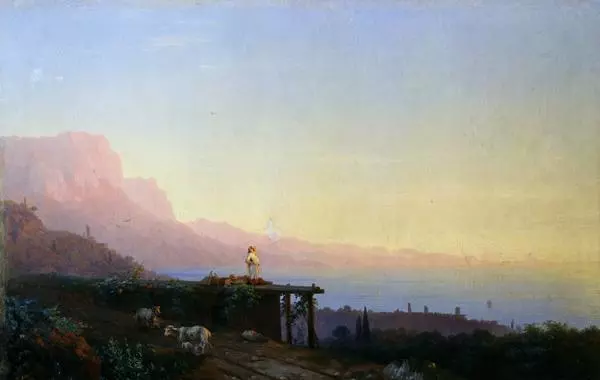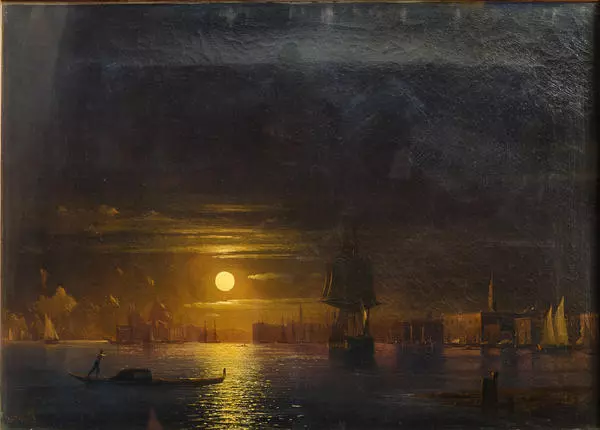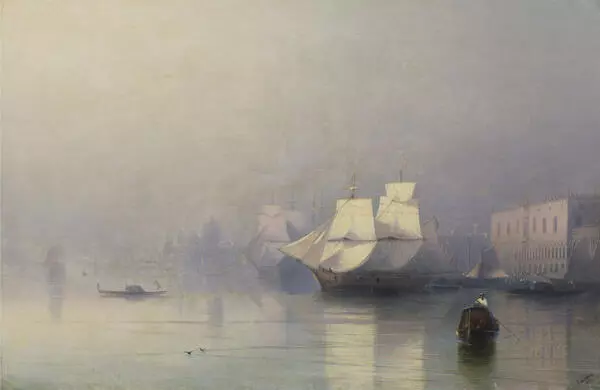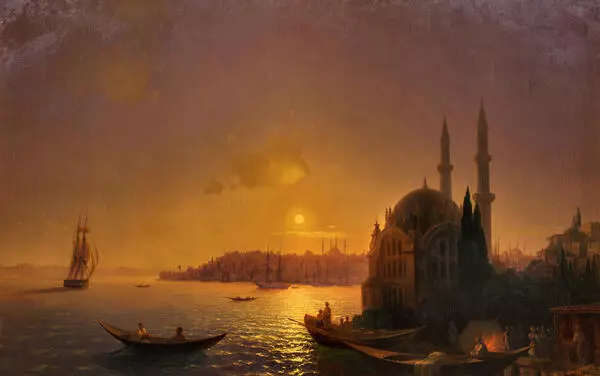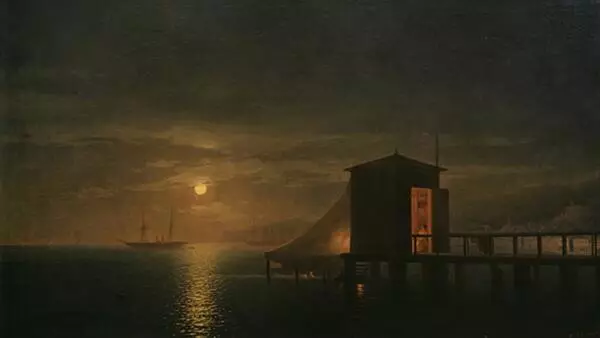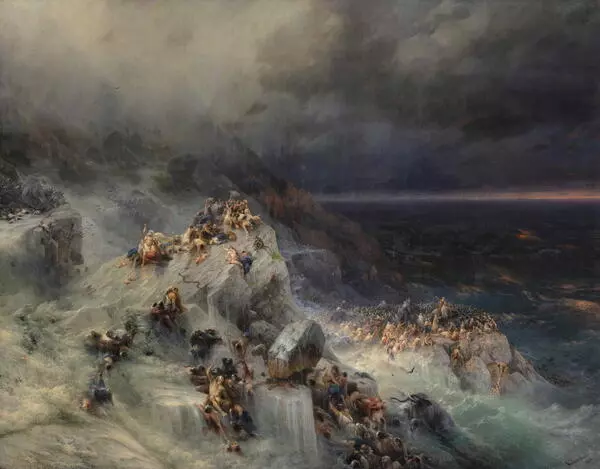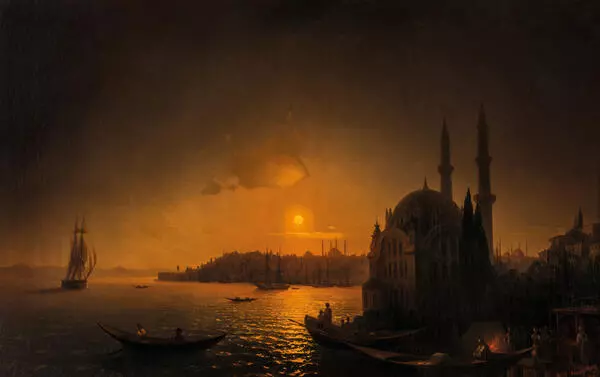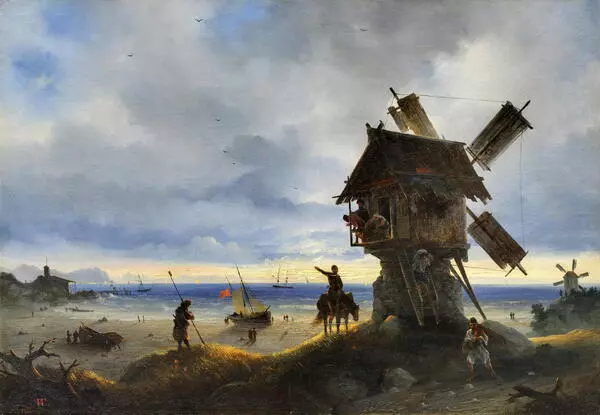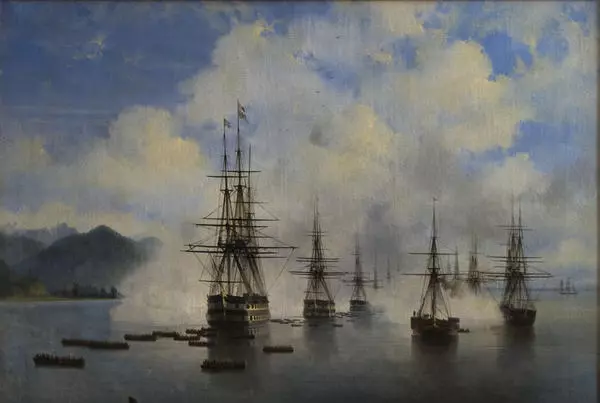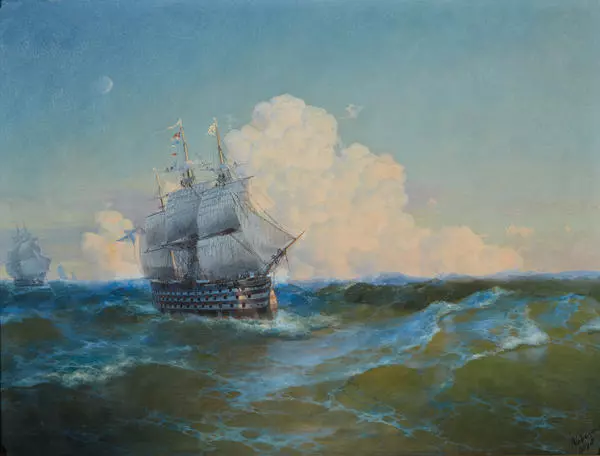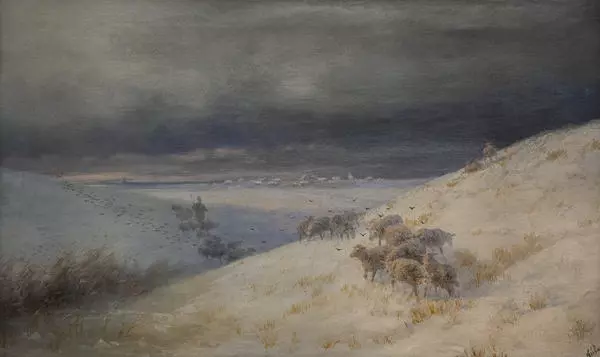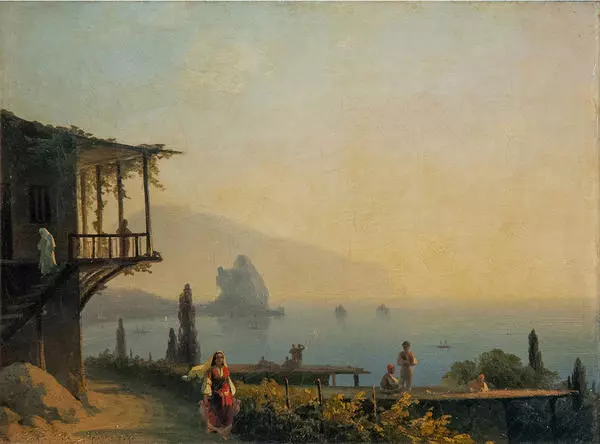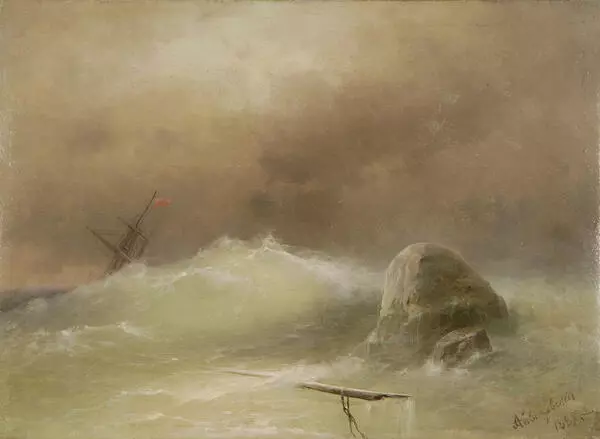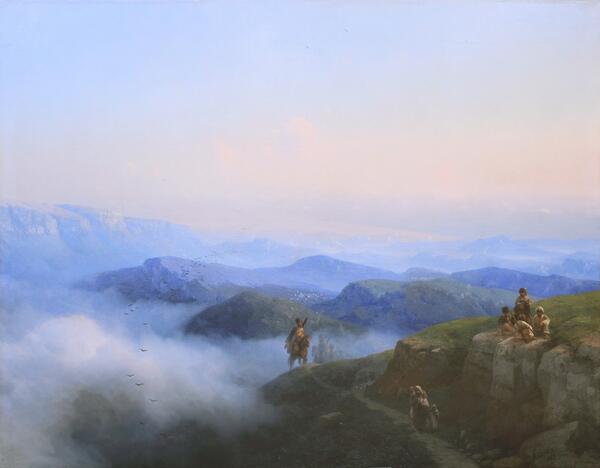Ivan Aivazovsky was a marine painter. He was born in the city of Feodosia on the Black Sea coast to a merchant family and upon graduation from the Emperor Academy of Arts, he was given a grand gold medal as a recognition of his excellent marks. As early as in his student years, the artist chose the marine landscape painting as his dedicated line of work.
At 25 Aivazovsky gained prominence in Europe, at 27 he was employed as a staff painter by the Navy Headquarters, and at 29 he became a professor. The artist’s portfolio included about six thousand paintings, he travelled all over Europe, America and the East, became a member of numerous academies of various countries and won many awards. Among Aivazovsky’s friends were painters, writers, admirals, and the Tsar himself could often be seen in his studio.
Ivan Konstantinovich Aivazovsky followed the romantic landscape painting traditions of the Russian art. The artist came up with a unique approach towards painting where he did the sketching in the field and then used his memory to complete the landscape in the studio, thus leaving a lot of room for improvisation.
As somebody who was born and lived long by the Black Sea, the artist spent a lot of time on the shore watching the waves. Battle painting had an important place in his life. The artist was rightfully called the historian and the minstrel of the Russian Navy glory. The ship commanders, many good acquaintances of his, spoke very highly of the battle scenes captured in his paintings.
In 1844, the 27-year-old artist became a staff painter in the Russian Navy Headquarters and started painting heroic battles. Ivan Aivazovsky’s paintings were accurate down to the smallest detail, he was able to grasp the very essence of the battle, its dynamics, tension and mood so that its outcome was clear to anyone.
Ivan Aivazovsky painted Battle at Sea in 1855. The artist depicted an episode of the Crimean War of 1853-1855 – the Russian and Turkish ships locked in fight. The Russian Nany officer, Captain-Lieutenant Grigory Butakov who commanded the agile and fast frigate Vladimir put his ship’s best qualities to use and after a three-hour battle his deadly accurate cannons forced Turkish Pervaz-Bakhri to surrender.
In 1856, Aivazovsky presented the painting to Butakov as a gift. The enlarged version of the painting is currently at display in the Saint-Petersburg Navy Museum.
At 25 Aivazovsky gained prominence in Europe, at 27 he was employed as a staff painter by the Navy Headquarters, and at 29 he became a professor. The artist’s portfolio included about six thousand paintings, he travelled all over Europe, America and the East, became a member of numerous academies of various countries and won many awards. Among Aivazovsky’s friends were painters, writers, admirals, and the Tsar himself could often be seen in his studio.
Ivan Konstantinovich Aivazovsky followed the romantic landscape painting traditions of the Russian art. The artist came up with a unique approach towards painting where he did the sketching in the field and then used his memory to complete the landscape in the studio, thus leaving a lot of room for improvisation.
As somebody who was born and lived long by the Black Sea, the artist spent a lot of time on the shore watching the waves. Battle painting had an important place in his life. The artist was rightfully called the historian and the minstrel of the Russian Navy glory. The ship commanders, many good acquaintances of his, spoke very highly of the battle scenes captured in his paintings.
In 1844, the 27-year-old artist became a staff painter in the Russian Navy Headquarters and started painting heroic battles. Ivan Aivazovsky’s paintings were accurate down to the smallest detail, he was able to grasp the very essence of the battle, its dynamics, tension and mood so that its outcome was clear to anyone.
Ivan Aivazovsky painted Battle at Sea in 1855. The artist depicted an episode of the Crimean War of 1853-1855 – the Russian and Turkish ships locked in fight. The Russian Nany officer, Captain-Lieutenant Grigory Butakov who commanded the agile and fast frigate Vladimir put his ship’s best qualities to use and after a three-hour battle his deadly accurate cannons forced Turkish Pervaz-Bakhri to surrender.
In 1856, Aivazovsky presented the painting to Butakov as a gift. The enlarged version of the painting is currently at display in the Saint-Petersburg Navy Museum.
